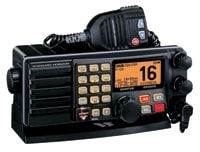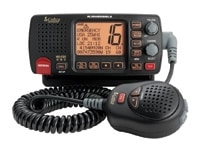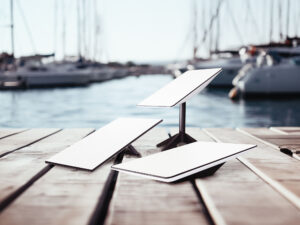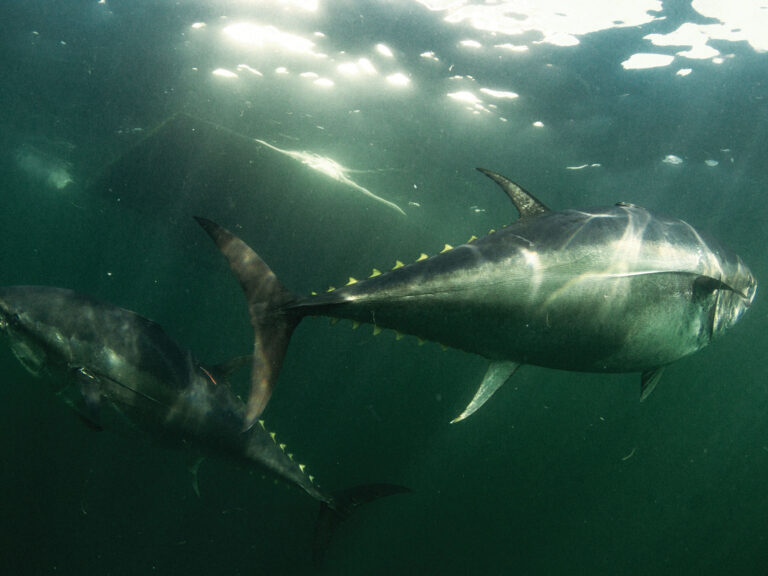The standby of boat-to-boat communications and emergency assistance, the workhorse VHF radio, has stepped into a new harness as an expanded communications center at the angler’s helm.
The kicker is DSC – Digital Selective Calling – designed as an emergency feature by the Coast Guard. DSC relies on a vessel-specific “telephone number” for each radio, called the Marine Mobile Service Identity. Skippers can get theirs free by signing up online with BoatUS or SeaTow.
Of more interest day-to-day is how DSC can be commandeered to help you catch fish. It’s not going to tell you where they are, but will let you share information with other anglers without broadcasting it to everyone with a radio, a load of live baits and a tankful of gas.
The key to sharing information is the MMSI and “position polling.” When you send a message to your buddy’s MMSI, your radio switches momentarily to channel 70, sends him the signal, and switches his radio to the channel you are using to call him. Provided you both have your radios plugged into your GPS and your chart plotters, his location also appears on your plotter.
Some of the messaging capabilities of VHF have yet to be fully developed. Currently you can’t transmit anything other than a live lat-lon over the radio, so if you wanted to provide a rendezvous point to another boat, you have to do it verbally. But there is action afoot by the Radio Technical Commission for Maritime Services to establish protocol for short messaging, so anticipate the VHF of the future to accommodate text messaging.
For the time being, there’s still plenty to work with. Most manufacturers have revamped their lines and expanded VHF capabilities within the existing framework of DSC and integration with other navigational components. Even the least expensive, most basic radios have everything that’s necessary to take advantage of the semi-secure communications that let you share fishing information and say things you wouldn’t want to put on the loud hailer.
The Ray49 ($209) from Raymarine is a compact Class D powerhouse that’s the smallest in the company’s

lineup and styled to fit where space is at a premium, yet fully NMEA compatible with chart plotters and GPS. Also, it’s functional, as are most radios, with NOAA weather alerts.
Also new on the compact side is a reissue of the familiar Eclipse GX1000S ($99) from Standard Horizon, the VHF that vice president Jason Kennedy claims that through the years, “has been on more boats than any other fixed-mount radio.” In its latest incarnation, the Eclipse offers SC-101 DSC, NOAA weather alert and NMEA interface for GPS and chart plotters. Standard offers a line of full-size, Class D radios, topping out with the Quantum GX5500S ($349), which is Bluetooth-equipped for hands-free communication. And, as if a portent of things to come, the CPV550 12-inch chart plotter ($1849) has an integrated Class D VHF, which can be linked to the FF520 fishfinder. There’s a world of information there for the transmitting, waiting for the proper protocol to be developed.
The new Class D MR F80 ($169) from Cobra Electronics features big, convenient controls and hold-to-save

soft keys, which simplify one-hand operation. All controls are available on the mic, and the “Rewind-Say-Again” feature records previous messages. If you have your head in the cooler or all hell breaks loose in the cockpit, and you miss a short but critical catch report, this feature lets you replay it, holding up to 10 seconds of the latest message and five seconds each of previous messages in its 20-second buffer. It’s also handy for replaying critical weather reports.
Icom revamped its entire line of radios this past year, and the new selection is headlined by the M504 ($300), a waterproof Class D VHF that can be paired with the CommandmicIII ($289), a remote hard-wired handset that can be mounted up to 60 feet from the base station.
Designed for boats big enough to get lost on, Simrad’s Class D RS87 ($1,842) allows up to four stations and two speakers to operate off the same black-box transceiver, mixed and matched with panel or handset control, which effectively operates as a six-station intercom system, as well as a full-functioning VHF system. For boats longer than 50 feet, Simrad’s systems offer multiple configurations.
Uniden, known for radio-frequency technology, has applied the same theory to its marine VHF radios. While they’ve been available for a couple of years, the UM525 with a black-and-white screen ($199) and the UM 625C color screen ($299) feature a patented, wireless mic/handset with a full set of controls.
Northstar has also announced a wireless mic in the Explorer 725 VHF ($350), a Class D DSC radio that accepts two remote, full-control Explorer 705 Wireless Handsets ($150) with intercom capabilities. The Explorer has a couple of angler-specific features: The first is “Track Your Buddy,” which tracks the position of multiple boats on your chart plotter via MMSI, so you can tell where your friends are fishing. A barometer in the handset monitors atmospheric pressure and displays a fish forecaster, which graphs recent barometric history to predict the best fishing times.
Contacts
Cobra
773.889.3087; cobra.com
Icom
800.999.9877; icomamerica.com
Northstar
800.628.4487; northstarnav.com
Raymarine
603.881.5200; raymarine.com
Simrad
simrad-yachting.com
Standard Horizon
714.827.7600; standardhorizon.com
Uniden
817.858.3300; uniden.com









